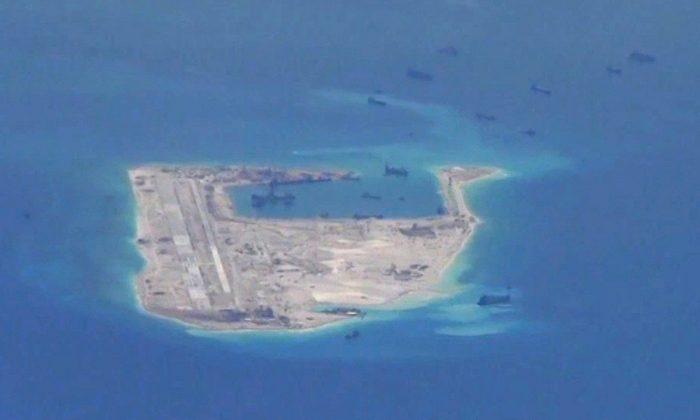WASHINGTON—Two U.S. warships sailed near islands claimed by China in the South China Sea on Feb. 11, a U.S. official told Reuters, a move likely to anger Beijing at a time of tense relations between the world’s two biggest economies.
Beijing and Washington are locked in a trade war and the two sides are trying to hammer out a deal ahead of a March 1 deadline when U.S. tariffs on $200 billion worth of Chinese imports are scheduled to increase to 25 percent from 10 percent.
Escalating tensions between the United States and China have cost both countries billions of dollars and roiled global financial markets.
The official, speaking on condition of anonymity, said the two guided-missile destroyers traveled within 12 nautical miles of Mischief Reef in the disputed Spratly Islands.
The operation was the latest attempt to counter what Washington sees as Beijing’s efforts to limit freedom of navigation in the strategic waters, where Chinese, Japanese and some Southeast Asian navies operate.
The Chinese regime claims almost all of the strategic South China Sea and frequently lambastes the United States and its allies over naval operations near Chinese-occupied islands. It has urged Washington to stop sending warships and military planes close to the islands that Beijing claims.
The islands China occupies in the South China Sea are off-limits to foreigners, with access under the effective control of the People’s Liberation Army despite them technically being administratively part of China’s southern Hainan Province.
Vietnam, the Philippines, Brunei, Malaysia, Indonesia and Taiwan have competing claims in the region.
Fears have grown in recent months that the U.S.-China trade dispute is just one element in a bilateral relationship that is fast cooling across the board, with top U.S. administration officials sharply criticizing Beijing for everything from human rights abuses to cyber espionage in the United States.
The two countries are also at odds over regional security, including Washington’s overtures to the self-ruled island of Taiwan, which China claims as its own.





